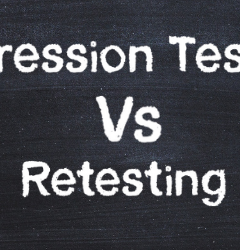10 Sep

In SDLC, where updates, CI, and rapid deployment are accepted practices, maintaining the stability and reliability of software is an important issue. One fundamental method for addressing that issue is regression testing. Regression testing services is the procedure of executing already finished tests to make sure that recently added or modified software isn’t hampered by earlier deployed features. Although it might seem difficult, regression testing is an essential element of software quality assurance. It can affect the overall stability of a software application.
Importance Of Regression Testing Services
➟ Ensuring Assured Stability and Reliability:-
Software systems often consist of lots of highly coupled parts that interact in complex ways. A change to one system element that seems minor could result in troubles with another, unrelated component. Regression testing ensures that the changes made or fixed, do not give expression to any new problems in regression testing.
➟ Identifying Unintended Side Effects:-
Iterative change to code is an essential component of software development, where developers add new features, increase performance, and fix problems. But there may be a chance that a code update will have unexpected issues, which affect the application. These effects could show up as performance, faulty features of application, or even security weaknesses. To identify these effects before they are introduced into production, regression testing is necessary.
Regression testing is a powerful tool that development teams can use to identify issues that might not be apparent at first sight. One feature’s bug fix may, for example, inadvertently break another, seemingly unrelated feature. By ensuring that these kinds of problems are discovered early in the development process, regression testing helps to avoid later, expensive, and time-consuming solutions.
➟ Cost-effective bug detection:-
The cost of regression testing is one of the common reasons, for the benefits of its use by the users. It is much cheaper to identify and solve imperfections early in the development process to tackle errors after the program has been deployed. An issue that finds its way into production could lead to revenue losses, downtime, and ethical harm to the organization. Post-release fixes sometimes call for urgent patches likewise, which can be costly as well as disruptive.
By identifying flaws before they are put into production, regression testing helps to reduce these risks.
➟ Assurance in Refactoring Code:-
Refactoring is the method that helps programmers to modify their existing code without modifying its exterior operation. It is essential for improving code’s readability, performance, and maintainability. Run with the risk, though, of causing new issues or harming current processes.
Regression testing provides the security that we require for starting refactoring. Before and after refactoring, developers can make sure that the refactored code behaves as intended and doesn’t cause new problems by doing a series of regression tests. As a result, teams can raise the codebase’s internal quality without endangering the program’s stability.
Conclusion:-
Regression testing is an important part of software development strategy that ensures the quality of life, reliability, and quality of software systems. Regression testing is necessary for present development processes like continuous integration and deployment because it can discover unwanted side effects, maintain software quality, and provide inexpensive issue detection. It provides teams assurance that they need to rework their code, optimizing it and reducing the risk of creating new issues. Regression testing is essential for producing dependable, high-quality solutions that satisfy client expectations.



Nikhil Trivedi